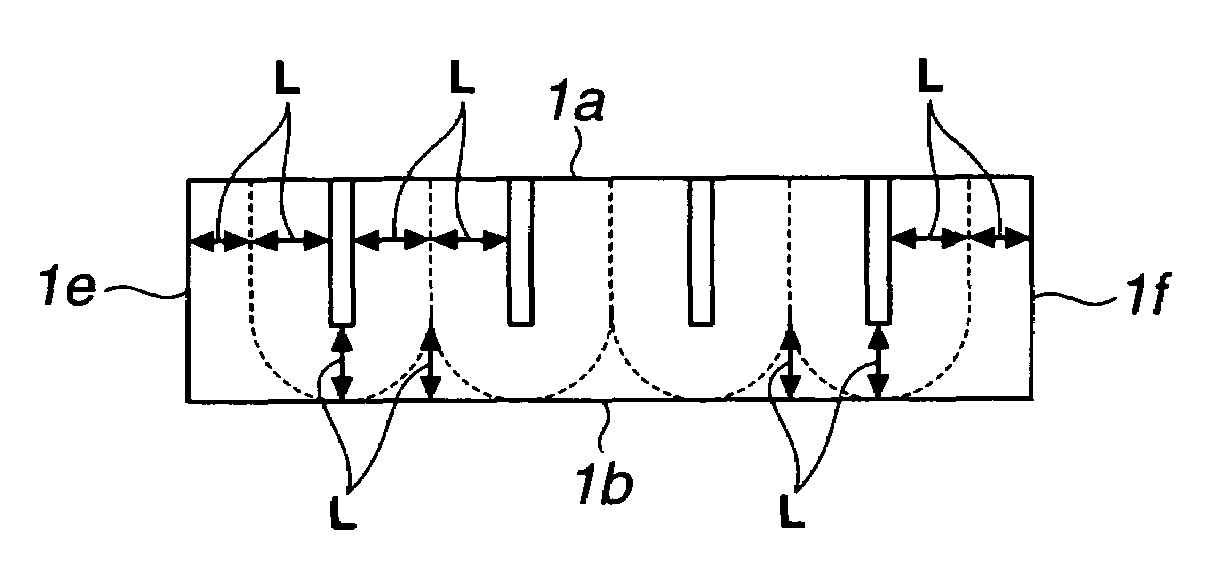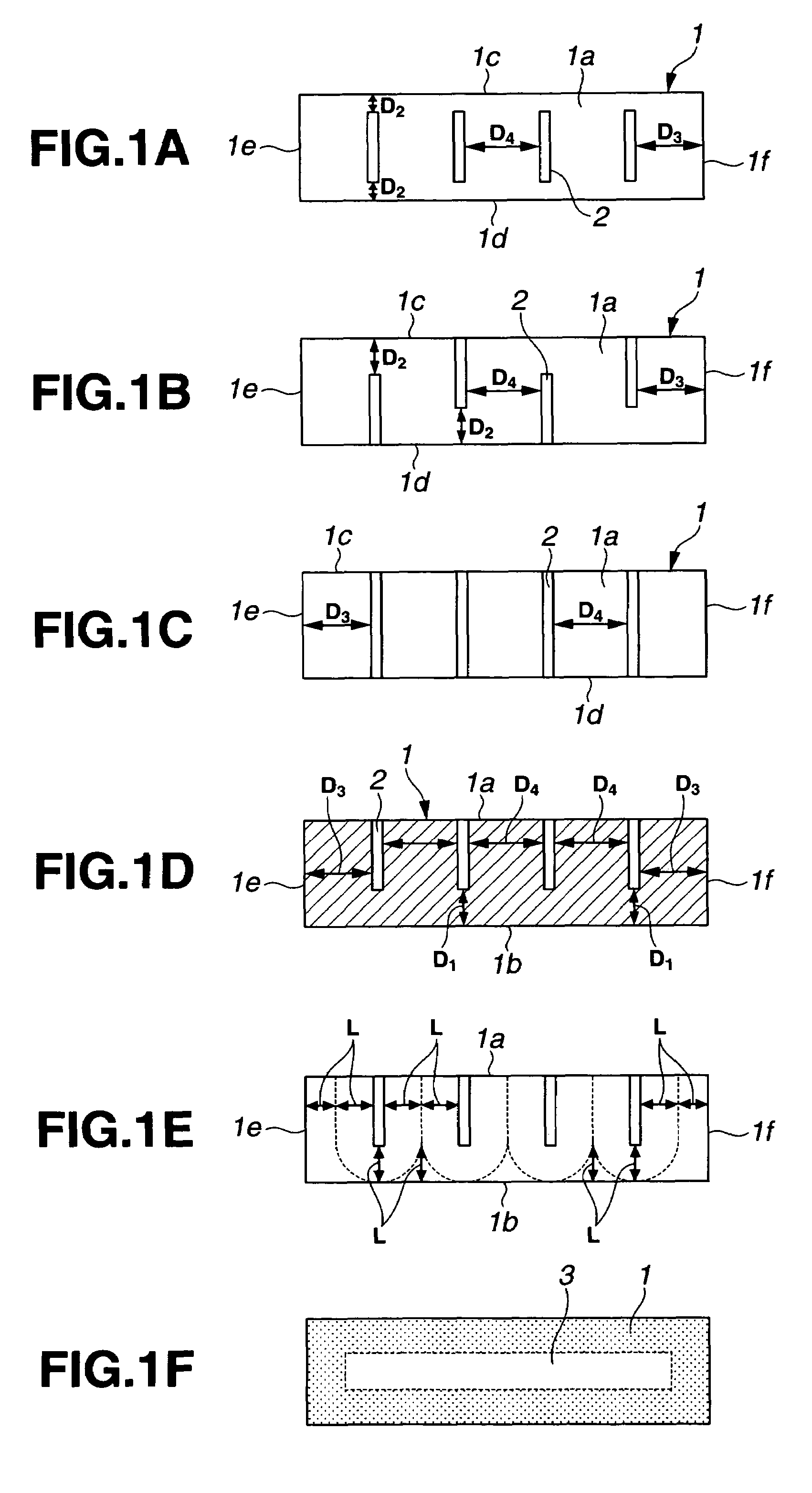Rare earth permanent magnet, making method, and permanent magnet rotary machine
a permanent magnet, making method technology, applied in the direction of magnets, magnetic materials, magnetic bodies, etc., can solve the problems of unavoidable loss of remanence, inability to measure practically acceptable, and the likelihood of demagnetization, so as to achieve low eddy current, high coercive force, and high remanence
- Summary
- Abstract
- Description
- Claims
- Application Information
AI Technical Summary
Benefits of technology
Problems solved by technology
Method used
Image
Examples
example
[0066]Examples are given below for illustrating the present invention, but the scope of the invention is not limited thereby. In Examples, the filling factor of dysprosium oxide or dysprosium fluoride in the magnet surface-surrounding space is calculated from a weight gain of the magnet after powder treatment and the true density of powder material.
examples 1-1 , 2-1
Examples 1-1, 2-1 & Comparative Examples 1-1, 2-1
[0076]Described below is the performance of permanent magnet motors having the magnets M1 and M2 of Examples and the magnets P1 and P2 of Comparative Examples incorporated therein. FIG. 2 illustrates an exemplary interior permanent magnet motor. A rotor has a four-pole structure of 0.5 mm magnetic steel sheet laminate having permanent magnets 12 embedded therein, and a rotor yoke 11 has an outer diameter of 312 mm and a height of 180 mm. The permanent magnets 12 each have a width of 70 mm, a dimension of 20 mm in the magnetic anisotropy direction, and an axial dimension of 180 mm. Since it is difficult to manufacture a sintered magnet having a length of 180 mm, in this example, four magnet parts having a length of 45 mm were bonded together with an epoxy adhesive. A stator has a six-slot structure of 0.5 mm magnetic steel sheet laminate with a concentrated winding coil wound with 60 turns on each teeth. The coil 13 is of a three-phase...
examples 3-1 , 4-1
Examples 3-1, 4-1 & Comparative Examples 3-1, 4-1
[0084]Described below is the performance of permanent magnet motors having the magnets M3 and M4 of Examples and the magnets P3 and P4 of Comparative Examples incorporated therein. FIG. 7 illustrates an exemplary surface permanent magnet motor. A rotor has a four-pole structure and includes a rotor yoke 21 of 0.5 mm magnetic steel sheet laminate having C-shaped permanent magnets 22 disposed thereon. The rotor yoke 21 had an outer diameter of 312 mm and a height of 180 mm. The permanent magnets 22 each have a width of 160 mm, a dimension of 10 mm at the center and 3 mm at the edge in the magnetic anisotropy direction, and an axial dimension of 180 mm. Since it is difficult to manufacture a sintered magnet having a width of 160 mm or a length of 180 mm, in this example, total eight magnet segments including two in a row direction and four in a column direction were butt joined with an epoxy adhesive. A stator is the same as in Example 1...
PUM
| Property | Measurement | Unit |
|---|---|---|
| distance | aaaaa | aaaaa |
| distance | aaaaa | aaaaa |
| particle size | aaaaa | aaaaa |
Abstract
Description
Claims
Application Information
 Login to View More
Login to View More - R&D
- Intellectual Property
- Life Sciences
- Materials
- Tech Scout
- Unparalleled Data Quality
- Higher Quality Content
- 60% Fewer Hallucinations
Browse by: Latest US Patents, China's latest patents, Technical Efficacy Thesaurus, Application Domain, Technology Topic, Popular Technical Reports.
© 2025 PatSnap. All rights reserved.Legal|Privacy policy|Modern Slavery Act Transparency Statement|Sitemap|About US| Contact US: help@patsnap.com



